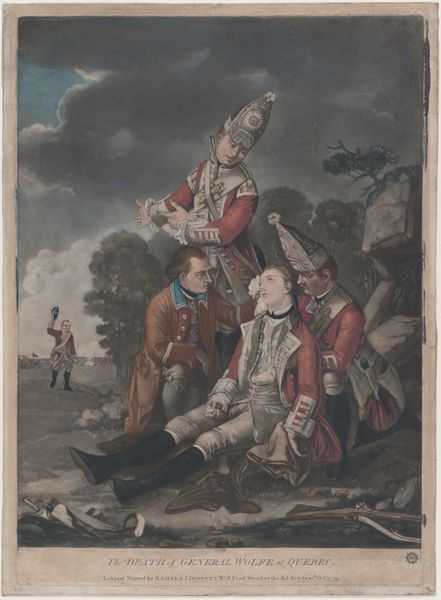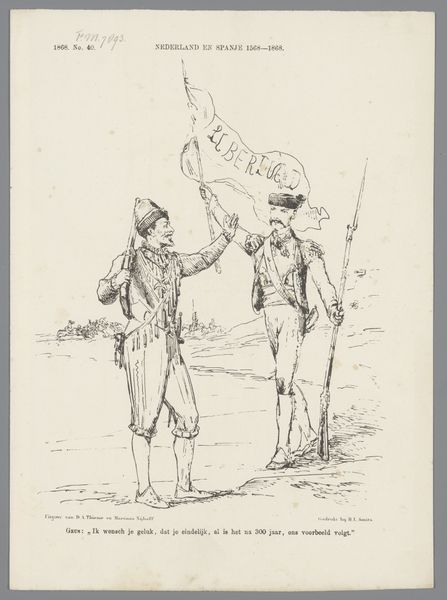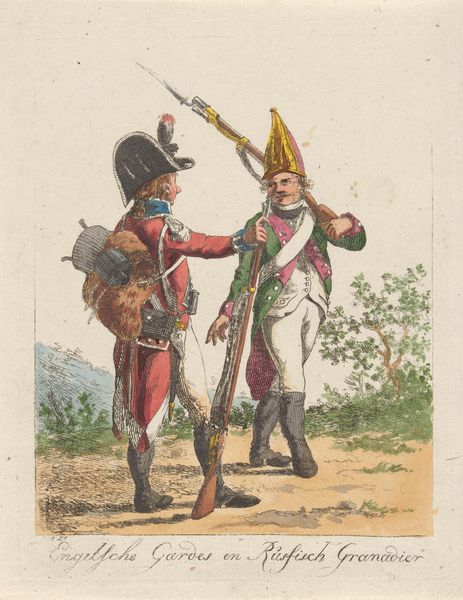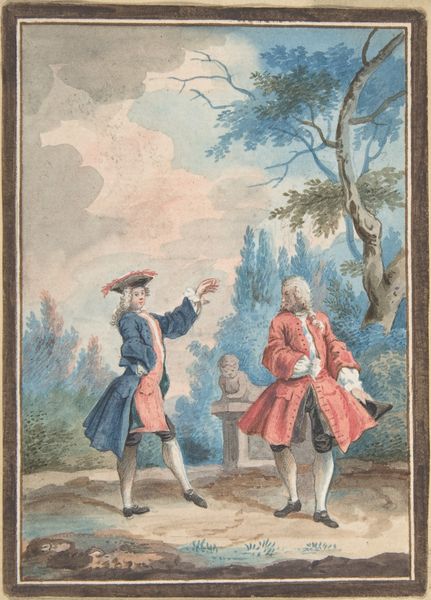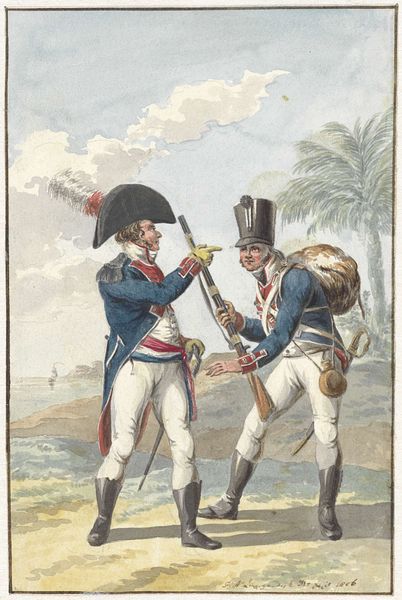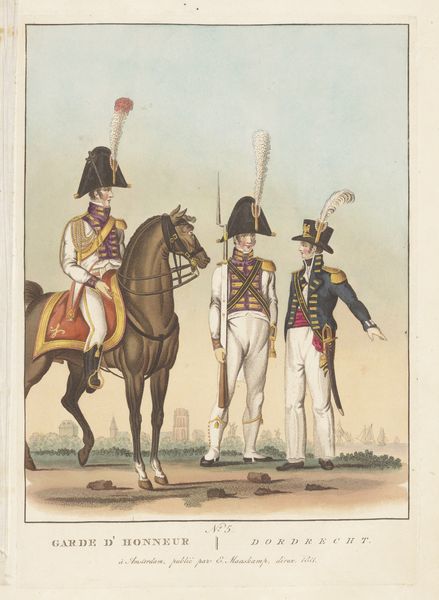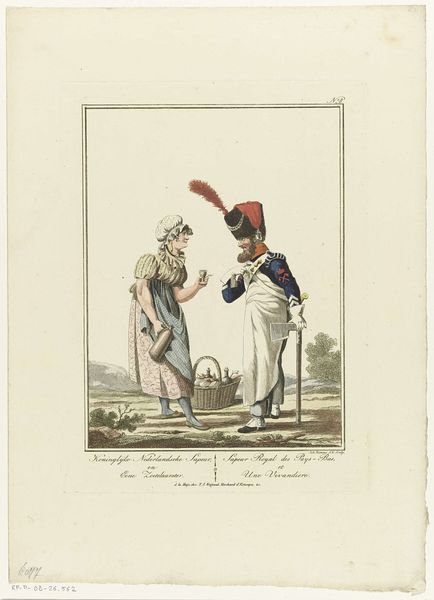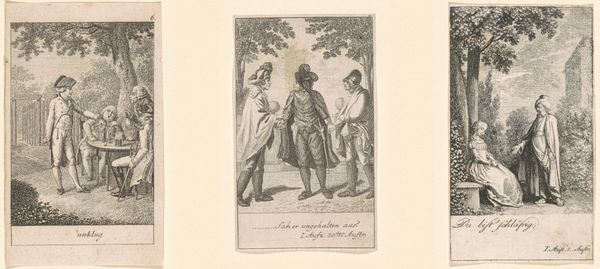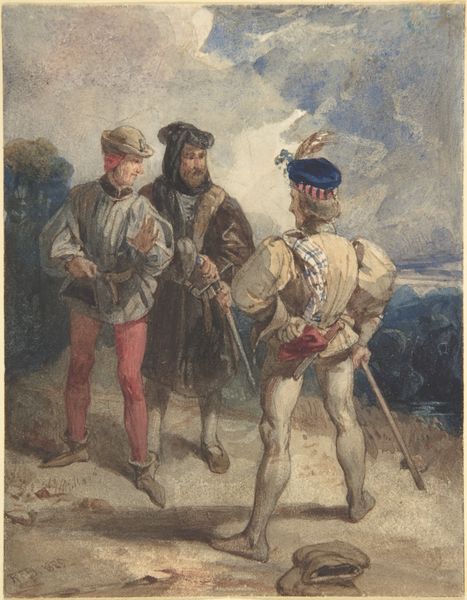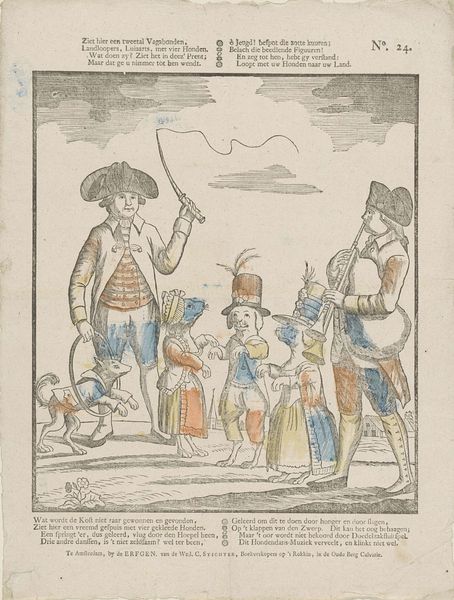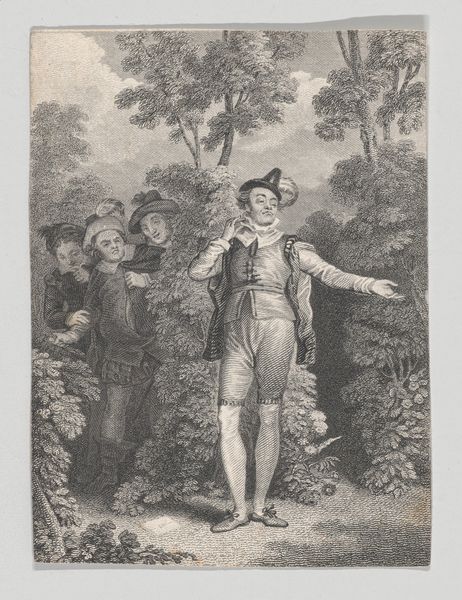
drawing, gouache, watercolor
#
portrait
#
drawing
#
gouache
#
oil painting
#
watercolor
#
romanticism
#
watercolour illustration
#
genre-painting
Dimensions: 277 mm (height) x 221 mm (width) (bladmaal)
Curator: Before us is a genre painting attributed to an anonymous artist from the 18th or 19th century, titled "Three French Soldiers on a Road," currently residing here at the SMK. The work is created using gouache and watercolor on paper. Editor: My first impression is one of contained chaos. There’s a tension in the body language—gestures flying every which way—yet the restrained palette and tight composition keep it from feeling truly frantic. Curator: It's intriguing how the artist captures a sense of immediacy. Genre paintings from this period often provide insight into daily life, reflecting the social climate of the time. We see, perhaps, a commentary on the role of soldiers within civilian society during this turbulent period in French history. The Romantic undertones seem to invite viewers to invest these figures with some humanity, something which might otherwise be denied in their role as invaders, depending on where the viewer of the time happened to be positioned. Editor: Visually, it is the play of lines that truly commands attention; consider the bold diagonals created by the muskets contrasted against the delicate, almost ethereal wash of the landscape behind. Then we see a wonderful tonal shift to that rugged log foreground, almost thrust into our personal viewing space. What do you think? Is it intentionally jarring, do you feel? Curator: Well, contextually, one might argue that juxtaposition intentionally throws the military figures into stark relief against a common scene. That it implies, for example, that even on a mundane road the apparatus of military rule remains heavily present and imposing on the population at large. It’s a powerful statement. Editor: Perhaps so. However, my reading lingers more with the application and combination of medium; the opacity of gouache allows for striking details in the soldiers' uniforms, their faces. It gives way at the edges to soft watercolor washes in a surprisingly elegant treatment of the overall landscape. It really highlights a sense of temporality, you know? Fleeting gestures almost on the verge of fading away. Curator: Fascinating. It underlines, perhaps, how art becomes a means for re-evaluating, indeed even interrogating social and political issues. It certainly makes you wonder what debates such art spawned when it first appeared. Editor: Absolutely, and isn't it precisely such ambiguity of artistic intent that continues to enthrall us, and draw viewers back? Thank you!
Comments
No comments
Be the first to comment and join the conversation on the ultimate creative platform.
